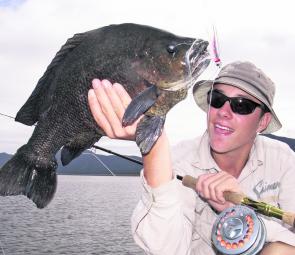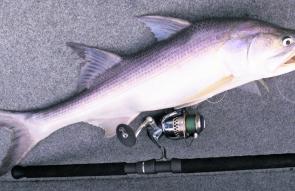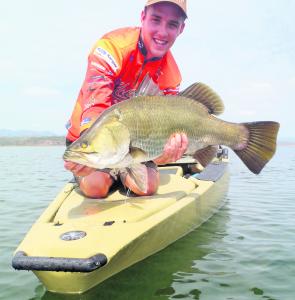July is a great time to fish the Whitsundays. As usual, there will be lots of fish on offer and plenty of places to catch them from the inshore rivers out to the many islands.
Spanish mackerel will be worth targeting throughout July. The waters around the islands should have cooled considerably making favourable conditions for them. These fish are very popular among anglers and can be caught on lure and bait.
Spaniards are mainly found around the outer islands in the Whitsundays and there are some hotspots where they seem to be caught more often than other areas. Places like Nara Inlet, Mackerel Bay, Double Rock and Double Cones have a good reputation as successful mackerel fishing grounds.
Trolling diving hardbody lures or fish baits, like rigged garfish and wolf herring, will produce interest from these fish; as will high speed jigging. Using baits under a float or live baiting also works well so be versatile when preparing to go out and target them.
Queenfish are another species that are commonly found in big schools in winter, especially July. These are the ultimate tropical sportsfish and are great fun to catch. They grow very big, they jump out of the water when hooked and they just love to smash surface lures retrieved at high speed.
These fish can be found around structure, like rocky headlands, or sand flats and river mouths. A good technique is to cast surface poppers and stickbaits around any likely areas and retrieve them back to the boat with a straight, high speed wind. Expect to catch other desirable species such as GT, golden trevally, coral trout and various mackerel species using this technique in July.
The strike from a queenfish on a surface lure has got to be one of the best surface strikes of any fish species. They appear from nowhere and attack with speed, usually with their back right out of the water, and can be seen with their mouth wide open as they try to inhale the lure, creating an almighty commotion on the water surface. They also respond well to high speed jigs and slices, as well as various soft plastic presentations.
In the Whitsundays, queenfish are commonly found around the bays and channels near Shute Harbour and the fishing jetty situated near the harbour boat ramp. Around the islands they can be found on shallow sand flat, especially where there are some mangroves lining the shoreline. Larger fish seem to prefer the deeper water around rocky headlands.
Be sure to squash down the barbs on your treble hooks when catching queenfish as they have quite a fragile mouth and gill plate area. Using barbless hooks will help you unhook any fish faster and with more ease. And if you plan to release the fish then it will have less damage and more chance of survival.
With the lighter winds, the rivers should become clearer in water clarity, which is favourable for a range of estuarine species including salmon, bream and flathead.
Threadfin salmon are a highly prized species for any angler fishing the rivers and should be well worth targeting this month. They can be caught on baits and lures in most depth ranges as they like to patrol the shallow sand flats all the way out to the middle of the river in the deeper sections.
Trolling diving hardbody lures with lots of rattle in them is a proven technique, as well as casting and retrieving soft lipless crankbaits.
The activity of the barramundi at Peter Faust Dam in July will be very dependent on the weather conditions. If you intend on fishing the lake for barra then try to pick a day with a good weather forecast. Cold days with strong winds will be the toughest times to catch them during July. Be sure to plan your trip around times with light winds and sunshine to improve your chances.
Another species worth targeting in July in Peter Faust Dam is the sooty grunter. This is a great little sportsfish that lots of lure anglers love to catch. These fish are much more commonly caught during the cooler times of the year making them a great species to target this month. Use smaller profile lures like small lipless crankbaits, surface poppers, hardbodies and jighead rigged soft plastics.
Sooty grunter can be found around places like small creeks, gullies and weedy edges. An unusual but very productive technique is to look for any standing dead trees in the lake that have cormorants nesting in them. Below these nests are a hotspot for sooty grunter as they hang around waiting to feed on the processed fish berley provided by the water birds above!
Reads: 2031
A hefty sooty grunter caught flyfishing around the weed edges at Peter Faust Dam.

This decent-sized threadfin salmon from the Proserpine River was caught trolling a deep diving hardbody near the river mouth.

The Hobie Pro Angler is the ultimate fishing kayak for the barra lakes. Perfect for sneaking up on this 65cm Peter Faust Dam fish with help from the hands-free Mirage Drive.




